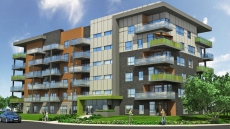The City of Surrey announced today the launch of its Advanced Traveller Information System (ATIS), which will help motorists make more informed decisions to improve their commute, reduce the environmental impact of driving, and lessen driver frustration.
“As we activate our Dynamic Messaging Signs, the City of Surrey is opening up even greater possibilities to make traffic safer, improve flow, and reduce environmental impact,” said Mayor Doug McCallum.
“Surrey has been recognized for being at the forefront of leading-edge, innovative communications technologies. The Advanced Traveller Information System that is being launched today is the latest example of how we are continuously improving our traffic information network in Surrey.”
Three overhead, full colour LED, Dynamic Messaging Signs are situated to provide alternate adjacent route choices for City Centre-bound drivers arriving from Highway 1 in the north and Highway 99 in the south.
The first is located westbound on 104 Avenue at 154A Street and provides route options via 100 Avenue, 104 Avenue and 108 Avenue.
The second sign, at the 5500 block of King George Boulevard, displays options via 132 Street, 140 Street and King George Boulevard.
The third, situated eastbound on the 152 Street off ramp from Highway 1, shares real-time travel to Surrey’s downtown via 100 Avenue, 104 Avenue and 108 Avenue.
The signs display travel times derived from data collected and analyzed from fifty Bluetooth sensors installed last year at selected traffic signals throughout the city’s northwest. The ATIS detects anonymized Bluetooth-enabled devices on the roads, encrypts the data and routes it to the Traffic Management Centre (TMC), where a computer tracks the speed and travel time of the detected devices as they move through the city.
A comparison of real-time speeds to historical speeds alerts staff when road links are travelling slower than normal, and traffic signals are then adjusted and the public is alerted to changing traffic conditions.
This new system is supported by TMC traffic engineers and technologists who actively manage more than 2,500 traffic devices across approximately 316 square kilometres of city space. ATIS will fully integrate with the City’s other systems, including the exclusive wireless radio communications system, nearly 500 traffic cameras, and over 410 networked traffic signals to improve safety and travel times.
Dynamic Message Sign Locations
The routes to City Centre that will be displayed for each of the three DMS locations are:
Westbound on 104 Avenue at 154A Street
1. 100 AVE
2. 104 AVE
3. 108 AVE
Northbound on King George Boulevard in the 5500 block
1. 132 ST
2. K.G. BLVD
3. 140 ST
Southbound on the 152 Street off ramp from Highway 1
1. 108 AVE
2. 104 AVE
3. 100 AVE
How the System Works
Surrey’s ATIS is programmed to use green, orange, and red text colours that correspond to increasingly longer travel times for each given route. Travel times posted are estimated from recent data detected by our BlueTooth sensors.
This information will allow drivers familiar with Surrey roads to make informed decisions about their route choice and balance out the delays on parallel corridors. Individual drivers’ travel times may vary from the estimated times calculated by the System. The messaging on the signs should also reduce a driver's use of handheld devices to evaluate their driving options.
Additional important messages for motorists may be posted on the ATIS signs by Surrey’s Traffic Management Centre staff including information about collisions, construction, severe weather or road conditions, AMBER Alerts, and safe driving reminders.
How Travel Time Information Is Collected
Surrey's ATIS works with BlueTooth technology to display estimated travel times. All BlueTooth devices have a unique ID assigned to them called a MAC address. We installed 50 BlueTooth sensors at select traffic signals for the ATIS project in spring 2018.
When a traveller’s BlueTooth-enabled device, such as a phone, tablet, or vehicle BlueTooth system, is detected by a BlueTooth sensor, information from that device is sent to our Traffic Management Centre and analyzed by a computer to report travel time information.
BlueTooth MAC address IDs are completely anonymous and not traceable to individuals. The BlueTooth sensors are configured to encrypt device MAC address IDs to further protect the privacy of individuals.
The travel time information is updated on the Dynamic Message Signs every minute. As the system relies on actual travel data to calculate new times, there are periods where routes may not show information due to lack of available real time data.

